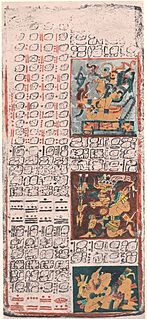
Indigenous languages of the Americas are spoken by indigenous peoples from Alaska, Nunavut, and Greenland to the southern tip of South America, encompassing the land masses that constitute the Americas. These indigenous languages consist of dozens of distinct language families, as well as many language isolates and unclassified languages.
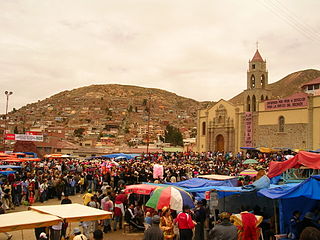
Oruro is a department in Bolivia, with an area of 53,588 km2 (20,690 sq mi). Its capital is the city of Oruro. According to the 2012 census, the Oruro department had a population of 494,178.

Aymaran is one of the two dominant language families of the central Andes, along with Quechuan.

The Uru or Uros are an indigenous people of Peru and Bolivia. They live on an approximate and still growing 120 self-fashioned floating islands in Lake Titicaca near Puno. They form three main groups: the Uru-Chipaya, Uru-Murato, and Uru-Iruito. The Uru-Iruito still inhabit the Bolivian side of Lake Titicaca and the Desaguadero River.
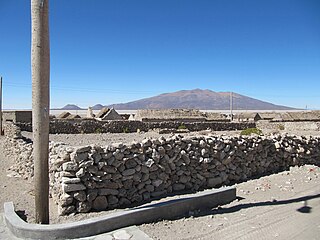
Sabaya is a province in the central parts of the Bolivian Oruro Department. Its seat is Sabaya.

Panoan is a family of languages spoken in Peru, western Brazil, and Bolivia. It is possibly a branch of a larger Pano–Tacanan family.

Puquina is a small, putative language family, often portrayed as a language isolate, which consists of the extinct Puquina language and Kallawaya, although it is assumed that the latter is just a remnant of the former mixed with Quechuan. The Qhapaq simi, which was spoken by the Inca elite, in contrast to the Quechuan-speaking commoners, is thought to be related, as well as, the Leco isolate language. They are spoken by several native ethnic groups in the region surrounding Lake Titicaca and in the north of Chile. Puquina itself is often associated with the culture that built Tiwanaku.
The languages of Bolivia include Spanish; several dozen indigenous languages, most prominently Aymara, Quechua, Chiquitano and Guaraní; Bolivian Sign Language ; and language of immigrants such as Plautdietsch. Indigenous languages and Spanish are official languages of the state according to the 2009 Constitution. The constitution says that all indigenous languages are official, listing 36 specific languages, of which some are extinct. Spanish and Quechua are spoken primarily in the Andes region; Aymara is mainly spoken in the Altiplano around Lake Titicaca, Chiquitano is spoken in the central part of Santa Cruz and Guaraní in the southeast on the border with Paraguay.

Rodolfo Cerrón Palomino is a Peruvian linguist who has crucially contributed to the investigation and development of the Quechuan languages. He has also made outstanding contributions to the study of the Aymara, Mochica and Chipaya languages.
Kunza a.k.a. Cunza, also known as Likanantaí, Lipe, Ulipe, or Atacameño, is an extinct language isolate once spoken in the Atacama Desert of northern Chile and southern Perú by the Lickan-antay people, who have since shifted to Spanish.
The Uru language, more specifically known as Iru-Itu, and Uchumataqu, is an extinct language formerly spoken by the Uru people. In 2004, it had 2 remaining native speakers out of an ethnic group of 140 people in the La Paz Department, Bolivia near Lake Titicaca, the rest having shifted to Aymara and Spanish. The language is close enough to the Chipaya language to sometimes be considered a dialect of that language.
Chipaya is a native South American language of the Uru–Chipaya language family. The only other language in the grouping, Uru, is considered by some to be a divergent dialect of Chipaya. Ethnologue lists the language vitality as "vigorous," with 1200 speakers out of an ethnic population of around 1800. Chipaya has been influenced considerably by Aymara, the Quechuan languages, and more recently, Spanish, with a third of its vocabulary having been replaced by those languages.
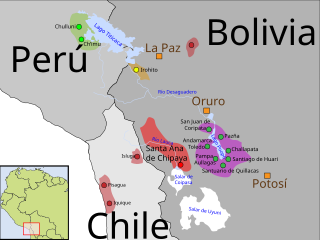
The Uru–Chipaya family is an indigenous language family of Bolivia.

Sabaya is a small town in the Bolivian Oruro Department. In 2001 it had a population of 573 inhabitants in 2001. Sabaya is the administrative center of the Sabaya Province and the Sabaya Municipality alike. It is located 200 km south-west of Oruro, the capital of the department. It is situated at 3,698 m above sea level in the valley of the Sabaya River on the eastern slopes of Pumari. Salar de Coipasa lies 25 km south-east of Sabaya, and the stratovolcano Tata Sabaya is situated 20 km south-west of Sabaya.

The Bolivian general election, 2009 was held on December 6, 2009, following a constitutional referendum held on 25 January 2009. Voters elected:

Lago Coipasa or Salar de Coipasa is a lake in Sabaya Province, Oruro Department, Bolivia. At an elevation of 3657 m, its surface area is 806 km². It is on the western part of Altiplano, 20 km north of Salar de Uyuni and south of the main road linking Oruro and Huara (Chile).
The Intercontinental Dictionary Series is a large database of topical vocabulary lists in various world languages. The general editor of the database is Bernard Comrie of the Max Planck Institute for Evolutionary Anthropology, Leipzig. Mary Ritchie Key of the University of California, Irvine is the founding editor. The database has an especially large selection of indigenous South American languages and Northeast Caucasian languages.
Chimané (Tsimané) is a South American language isolate. Some dialects are known as Mosetén. Chimane is a language of the western Bolivian lowlands spoken by the Tsimane peoples along the Beni River and the region around San Borja in the Department of Beni (Bolivia). Sakel (2004) classifies them as two languages for a number of reasons, yet some of the variants of the language are mutually intelligible and they reportedly have no trouble communicating and were evidently a single language separated recently through cultural contact.
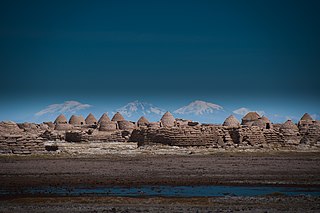
Chipaya is a village in Bolivia located in the Sabaya Province of the Oruro Department. It is the seat of the Chipaya Municipality. In 2001 it had a population of 363. The village is situated in a remote area northeast of Lake Coipasa where the people have maintained special elements of their culture.
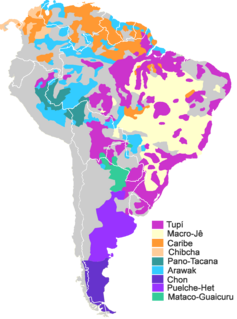
The indigenous languages of South America are those whose origin dates back to the pre-Columbian era. The subcontinent has great linguistic diversity, but, as the number of speakers of indigenous languages is diminishing, it is estimated that it could become one of the least linguistically diverse regions of the planet.













